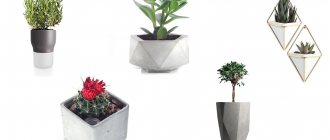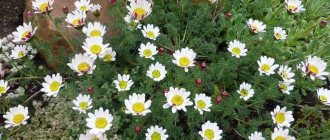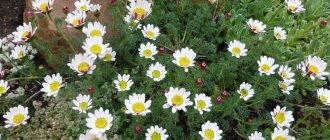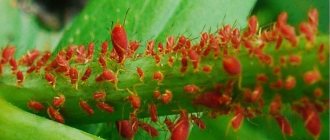Believe it or not, there are quite a few apps for identifying plants and flowers. I'll tell you about the best ones. Or rather, those that I consider the best for subjective reasons. Some of them are very similar in function, others are a little more unique. But every single one of them is really good.
They will not only help you find out the name of a particular flower or plant, but also tell you about it. I'll also talk about an insect identification app that will also serve gardeners well. If you are interested, then read on.
LeafSnap
An excellent application for identifying plants and flowers. Quite possibly one of the best of its kind on the Play Store. Harmoniously combines beautiful design and functionality.
Just take a photo of a specific flower, and LeafSnap will give you a wealth of information about it once it finds it in its database. If you want, you can dig into this database yourself. The developers claim that their brainchild can accurately recognize 90 percent of all known flora.
Available for Android.
Yandex.Alice recognizes a flower from a photo
Alice is a voice assistant from Yandex. She has a lot of abilities. Firstly, he can become a real conversationalist, telling a bedtime story. Secondly, set an alarm or check the weather in your city. Well, thirdly, he will also play “Cities” with you and find any information of interest. Alice comes complete with Yandex Browser, which can be installed on both a smartphone, tablet, and computer.
How can Alice help in this matter? She will analyze information from the Internet and give an answer. What do we have to do?
- Install Yandex Browser from the Play Store or App Store on your device and go to it.
- Find the purple round icon, click. This is the voice assistant Alice. Write to her in the chat so that she can identify the plant from the photo. Or tell her about it.
- Then attach a photo from the gallery to the chat with Alice.
- In a few seconds, it will provide you with search results, show you similar images, and also identify the name of the plant.
Alice is not just a voice assistant, it is a virtual interlocutor who will also help in everyday matters.
PlantNet
PlantNet relies on human experts rather than artificial intelligence. With it, you will begin to better understand the surrounding vegetation, and at the same time get help. PlantNet currently recognizes approximately 20,000 species, and the database is constantly expanding. With 360,000 species on the planet, there's plenty of room to grow. Although this can be said about almost all similar applications.
PlantNet can divide flora by genus or family, but the multi-identification feature allows you to search for a photographed plant throughout the application database, and not just in a selected section. Outwardly everything is quite nice. The vast majority of menu items are pinned to the bottom bar, no matter what screen you're on. And PlantNet is free.
Available for Android.
PlantSnap - will help you identify the plant
The PlantSnap mobile application is designed to determine plant species and their names. The program has access to a database that stores information about more than 300,000 trees and flowers. At the moment, the application easily identifies about 70,000 different plants. Also, every month the database is replenished by approximately 50,000 plants.
Such a program should be installed for everyone whose life is closely connected with gardening. After uploading a photo, the application analyzes it and finds matches with existing photographs. It also shows how much, in percentage terms, the plant in the photo resembles a certain species.
- Install the PlantSnap application on Android or iPhone and launch it.
- Upload a photo of the type of plant and whose name you want to determine.
- Wait for the results. This usually takes a few seconds.
The program will not just give a short answer, but will provide all the detailed information and classification.
PictureThis
Another great app with powerful AI (artificial intelligence). PictureThis can identify a plant, flower or weed almost instantly, all you have to do is take a photo of it. Although you can manually search the database. Each representative of the flora is provided with a detailed description.
According to the developers, PictureThis identifies more than 10,000 plant species with 98% accuracy. The company even claims that their brainchild is more effective than most human experts. The application can also send advice from a community of plant growing experts, as well as provide care tips, for example, reminders to water.
Available for Android.
Google Lens is an application that can recognize anything
It will not be difficult to determine the type of indoor plant from a photo if you use Google Lens. The utility is based on computer vision technology, which allows you to recognize a huge number of objects, including plants. The program can name the breed of an animal, the type of plant, any device, and much more. In some cases, they even provide a link where you can click to purchase the same item.
NatureID
The NatureID developers did their best - everything works perfectly. Here you can take a photo of a plant and the application will start searching for it in its database, and when it finds it, it will display mountains of pictures and detailed descriptions.
The desired options can be added to the collection. With the help of notifications, NatureID will also help you care for your flowers, so you won’t forget to water and feed them on time. In addition, the application has a plant disease identifier, which is useful in case of trouble.
Available for Android.
Names of popular houseplants with large green leaves
Indoor plants with large green leaves are also popular among gardeners.
Big leaves
The leaves of the following indoor flowers evoke real admiration:
- butylone Its homeland is South America. In Russia, the flower received the name “indoor maple” due to the shape of its leaves. Today there are 150 known species of it, which are very different from each other;
- abutilone. It can grow as a small tree or shrub. Its height reaches 2 m. The plant produces flowers in the form of a bell, which has a different color. Abutilone is characterized by rapid growth;
- anthurium, or flamingo flower. It is found in the USA and the Caribbean islands. The plant produces beautiful flowers that look very similar to artificial ones. They can be either white or red. Anthurium is poisonous, therefore, if there are animals or small children in the house, it is necessary to isolate this plant from them;
- aspidistra, or cast iron flower. The plant received its second name due to its endurance. Aspidistra normally tolerates sudden changes in temperature, improper watering and untimely replanting. The birthplace of the flower is China and Japan. Aspidistra has virtually no stem. Rarely throws out flowers. They have a dirty purple color. The plant also feels normal in dark places, since it contains a lot of chlorophyll;
- Dieffenbachia. Colombia and Brazil are the birthplace of this plant. At home, the maximum height of the flower reaches 1.2 m. It does not require special care and is a poisonous plant. Dieffenbachia has beautiful large colorful leaves;
- Syngonium appeared in the United States. Grows up to 1.5 m. The thin stem ends in an arrow-shaped leaf. The plant practically does not bloom. Syngonium purifies the air from xylene and formaldehyde.
Wide leaves
Flowers with wide leaves also look attractive. The most common among them are:
- monstera. There are legends about this flower as a killer plant, which is why this name arose. It is a vine with large leaves with slots. In indoor conditions, Monstera grows up to 2 m. It has aerial roots that must be directed to the ground. Monstera practically does not bloom, but sometimes pale green inflorescences appear on it;
- alocasia. It is often called the elephant ear, since the leaves of the flower can reach 1 m. The flower’s homeland is Asia, so it loves warmth and humidity. In indoor conditions, alocasia can reach 1.5 m in height. It is extremely rare to see flowers on it. They have a white and pink color. The average lifespan of a plant is about two years;
- arrowroot. She is originally from Central America. The plant does not exceed 30 cm. The peculiarity of this flower is its variegated striped leaves with smooth edges, which fold at night. Beautiful veins are clearly visible on the plates. Occasionally small white or pale lilac flowers appear on arrowroot.
Thick and fleshy leaves
With fleshy thick leaves, the following varieties are grown at home:
- aichrizon. It is also called the tree of love. The leaves of this flower are heart-shaped. They have a rich dark green color and a velvety surface, as they are covered with white fluff. The plant is highly branched. Its trunks can be either straight or curved. Its flowers are collected in small panicles and have a variety of colors: yellow, cream, white and red;
- sedum It belongs to the largest genus of succulents. The flower has spread to the arid areas of Mexico, Alaska, and the United States.
Agrobase
An excellent tool for farmers and agronomists. There is a lot of information on agronomy and an enormous database of pests, weeds and diseases. And also - data on all registered pesticides, insecticides and herbicides; you will only need to correctly indicate the country. Agrobase will help you recognize diseases, insects and pests, and protect your crops.
The database is constantly updated, so you will always be up to date. Weeds, pests, insects or diseases can be found by searching by their common and Latin names, category or crop. The design of Agrobase is quite nice, the database is conveniently compiled and sorted into categories, so it is easy to navigate.
Available for Android.
FlowerChecker+
FlowerChecker+ is a little different from all other applications that are based on AI. Here you can also take a photo of the plant/flower to identify it. But the point is that, unlike the analogues mentioned above, FlowerChecker+ will send the photo to human experts. It usually takes them from a few minutes to several hours to answer, depending on the time of day and the complexity of the question.
The company says it can find a solution more than 95% of the time, on average. In principle, the team can help you solve any questions regarding plants, whether you just want to broaden your horizons, or find out what is wrong with your plant and how to help it. Please note that the application costs 69 rubles. Just keep in mind that one payment gives you the opportunity to do three consultations. If you need more, you will have to pay again.
Available for Android.
Search by photo in Google or Yandex
If you don’t have time to wait, then you can try your luck on a photo search service. This method may seem the most effective, but it has a drawback that is not obvious to an inexperienced user - you will not be able to understand whether you got the correct result or not.
Our website already has instructions on recognizing faces in photographs, which describes the process of using search engines to search by photo. It works the same way with flowers.
Yandex
According to my personal observations, the image search service in Yandex works better than in Google, so we’ll start with that.
To find the name of a flower from a photo, follow these steps:
- Open the Yandex Images service page.
- Go to the form to upload images.
- Drag the image into the special field and wait for the service to perform a search.
- If the search engine is guaranteed to recognize your plant, it will even provide a description from Wikipedia. By rummaging through the pages provided, you can find out the exact name of the plant in Latin.
To find an image using Google, go to the main page of the search engine and follow the instructions:
- Click on the stylized camera icon to open the image upload form.
- Select the “Upload image” section and click on the “Select file” button.
- In the window that appears, select the location of your photo and double-click on it with the left mouse button.
- Wait while the service performs a search.
At this stage, serious shortcomings of the Google service begin. Most likely, it will not immediately show you the exact answer, and you will have to look through the proposed options from similar ones to find the name of your plant. It is worth considering that not everywhere you will come across exactly the same flower as yours. Perhaps there is a similar one, but of a different variety.
Plantix
If you want to grow something yourself, Plantix will come in handy. The main goal of the application is to help you get a healthy harvest. Here you will find information on 30 main crops and more than 400 of their damages. All you have to do is take a photo of the diseased crop, and then - the wonders of high technology. In general, this is a kind of doctor for your crops.
The content is translated into 18 languages, which is rare. Plantix also has a large farming community with more than 500 experts. You can ask any questions. In addition, the application contains tips on crop production and an agronomic weather forecast.
Available for Android.
Insect Identifier
I already briefly mentioned Insect Identifier at the beginning of the article. It identifies insects and thus helps to know which ones are harmful to plants and which ones are not. Just take a photo of the pest, and the application will find mountains of information about each insect, as well as many of its photographs.
The developers note that they take information for their machine learning algorithm only from reputable professionals. The company also notes that the database is constantly updated with new information. You can also keep a diary of caught insects in Insect Identifier. True, you will have to pay 399 rubles for the application.
Available for Android.
Indoor plants with a thick trunk
The following varieties with a thick trunk are grown at home:
Bokarneya, or bottle tree. This flower is native to Mexico. It is very popular among gardeners because of its wide trunk and long thin leaves, which give it a very original appearance. The cortical trunk can grow up to 1.5 m, and in natural conditions - up to 10 m. The leaves are gray-green in color and reach 60 cm;
- pachypodium, or thick leg. It has a wide trunk that resembles a cactus because the flower is covered with spines. At its top there are thin leaves that resemble a palm tree. Under natural conditions, the spines protect the pachypodium from wild animals; they drain the poison. To avoid troubles in the apartment, it is better to avoid this plant and not touch its spines. If you take good care of the pachypodium, then in the fifth year of life the plant will have large white flowers;
- money tree, or crassula. The plant got its first name due to the fact that its leaves look like silver dinars, and the second one arose due to its wide trunk. The flower can reach a height of 1.5 m. Pale inflorescences appear at the top of the tree. This happens extremely rarely; it is believed that a flowering tree brings good luck and helps fulfill desires.
Finding out the name of a house plant with large green leaves turns out to be not so difficult, the main thing is to approach this issue correctly. After that, all that remains is to study the information about his needs and preferences, and then it’s a matter of small things.
https://happyflora.ru/opred.phphttps://lifehacker.ru/identification-of-indoor-plants/https://naogorode.net/kak-uznat-nazvanie-komnatnogo-rasteniya-po-vneshnemu-vidu- listyam-forme/https://fishingsecrets.info/opredelitel-komnatnyh-rastenij-po-foto/https://pocvetam.ru/komnatnye-rasteniya/cvetok-s-dlinnymi-uzkimi-listami.html










